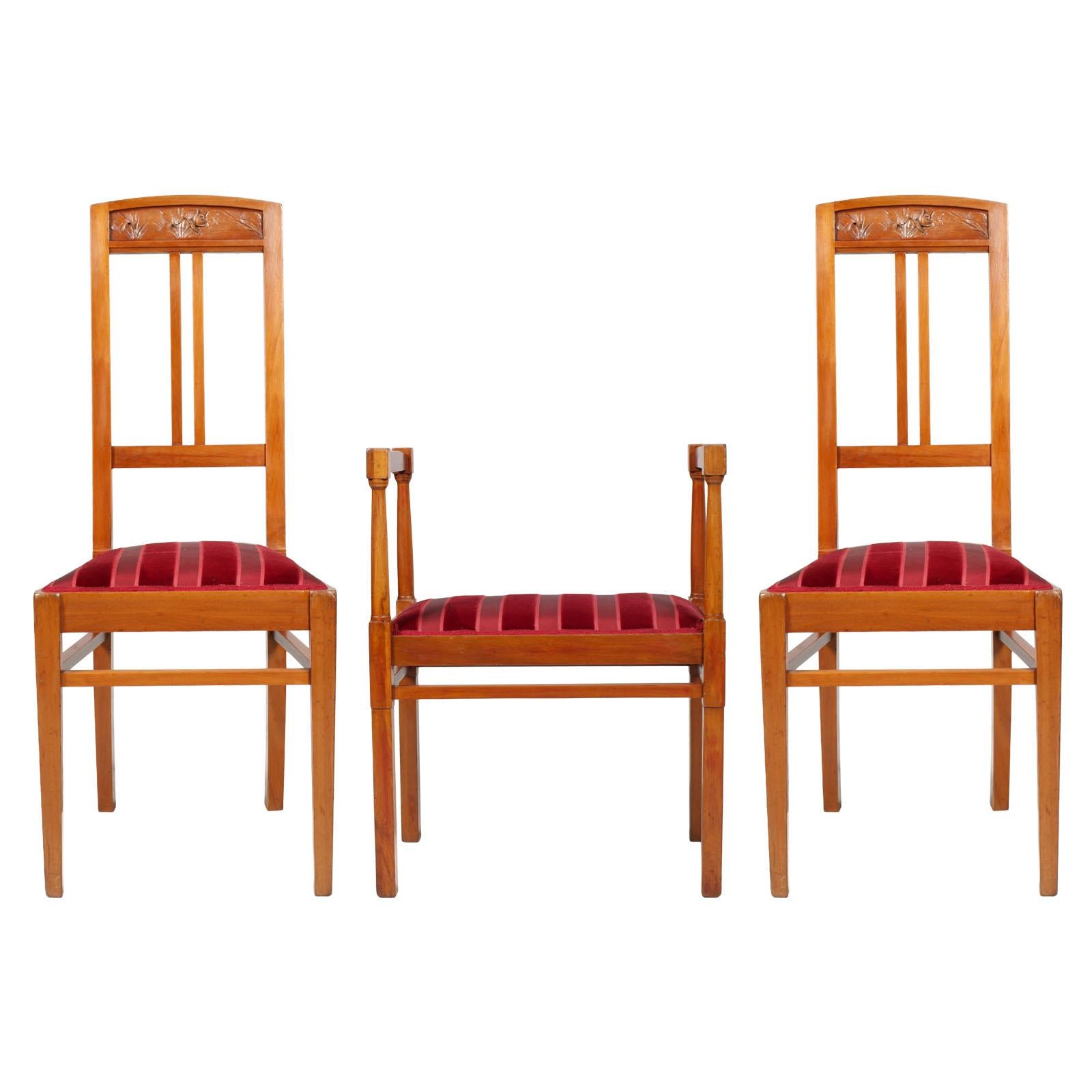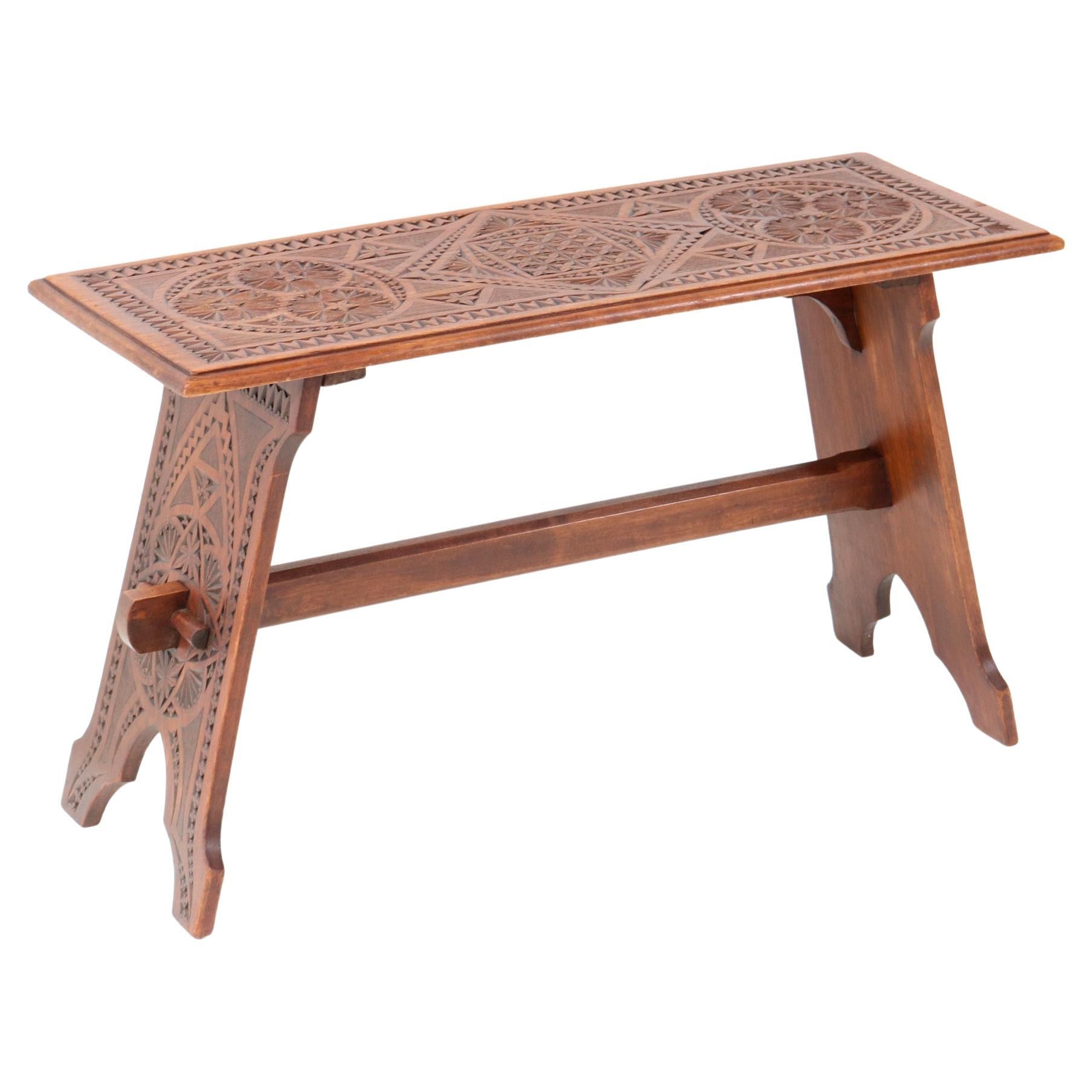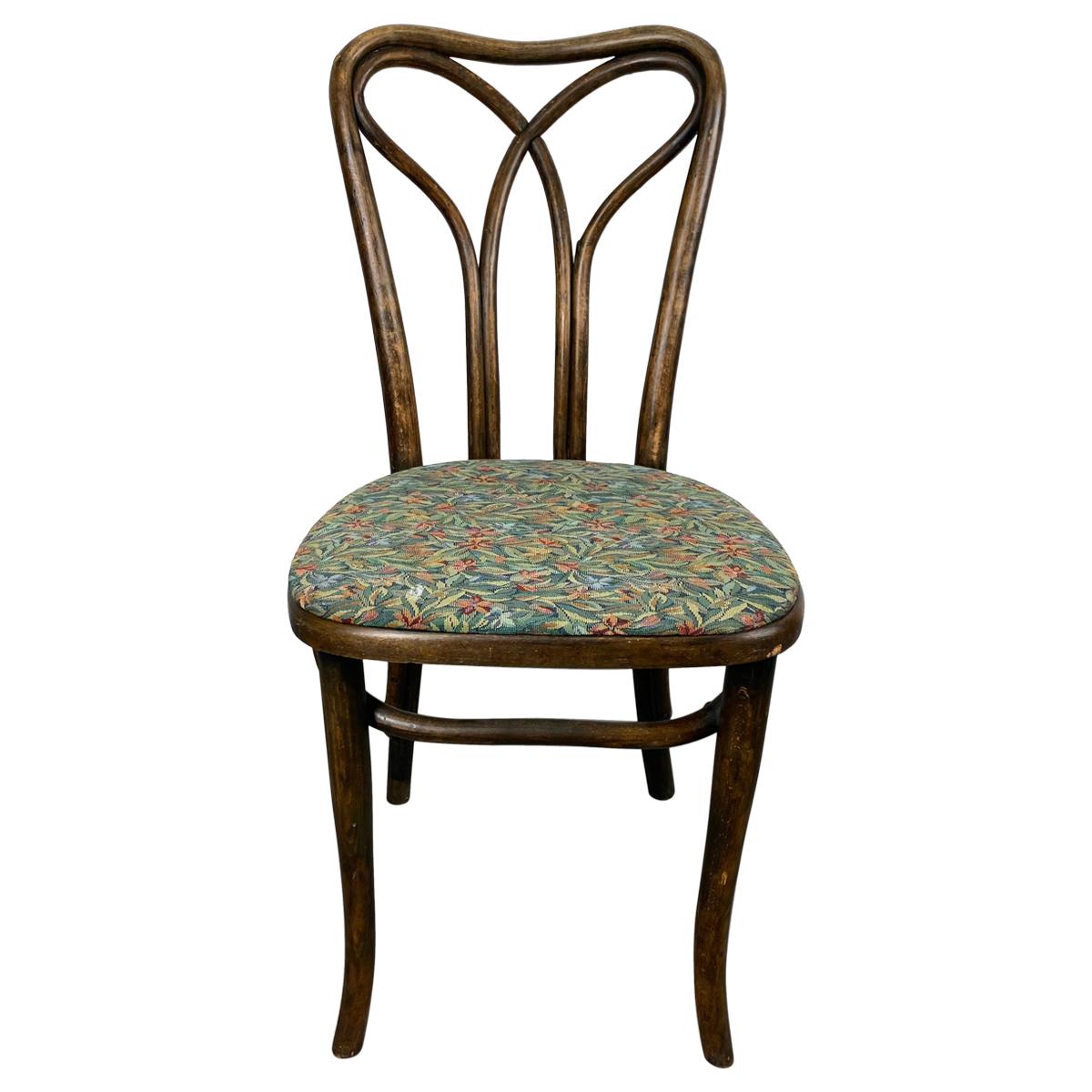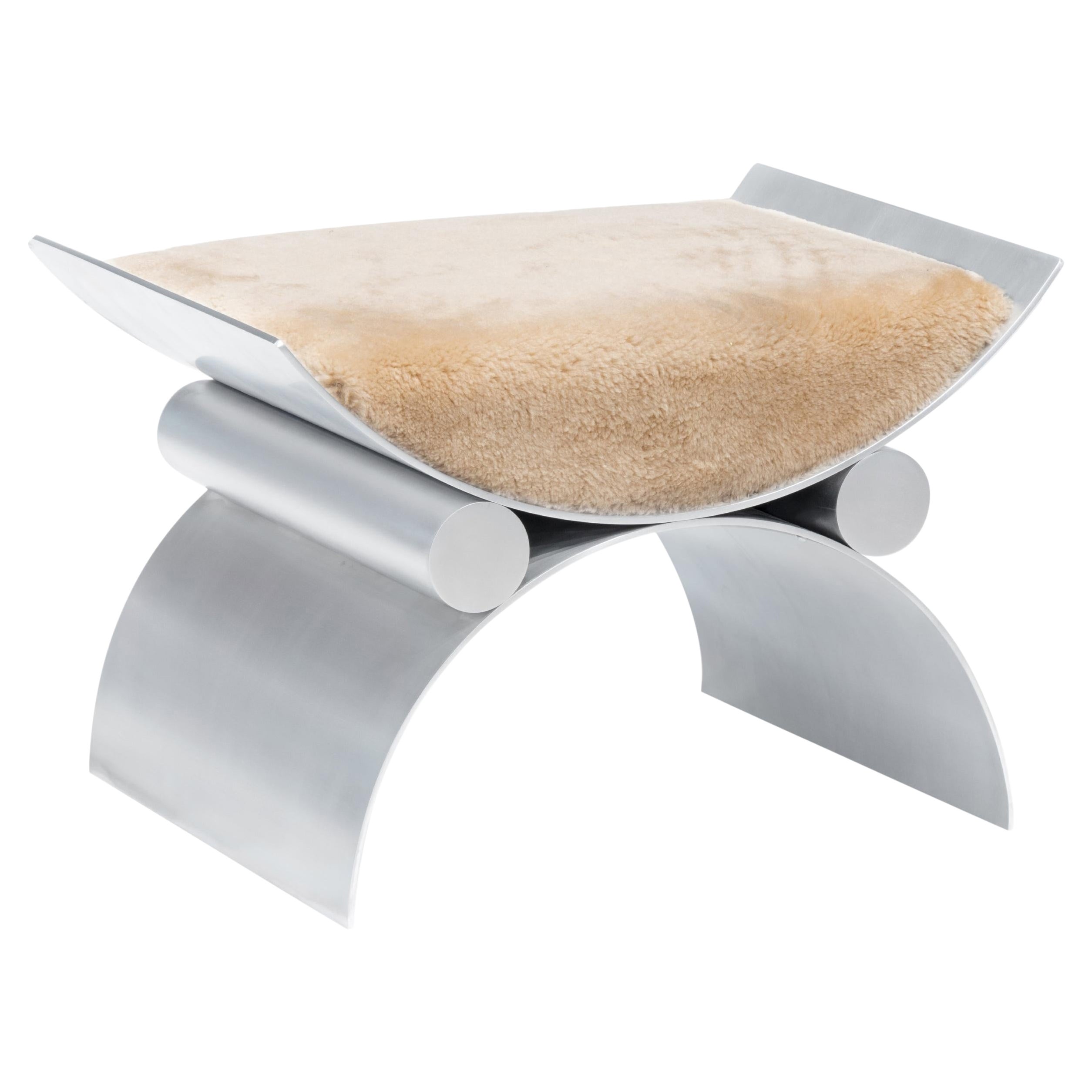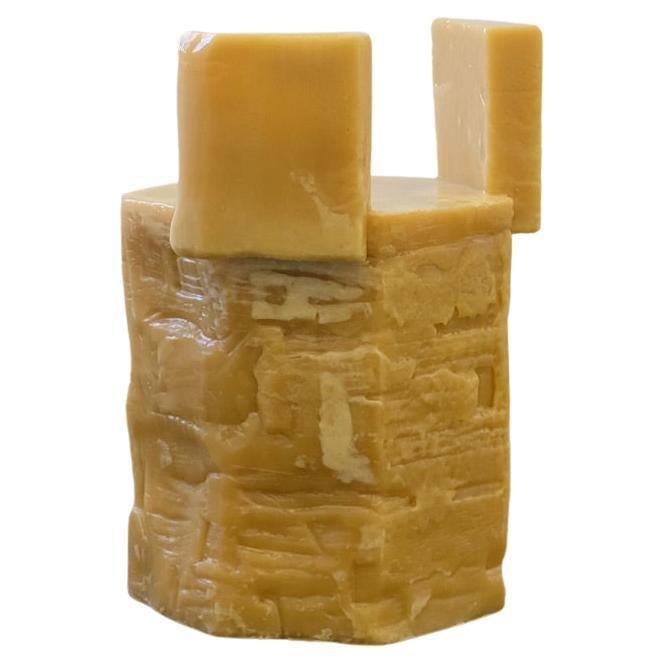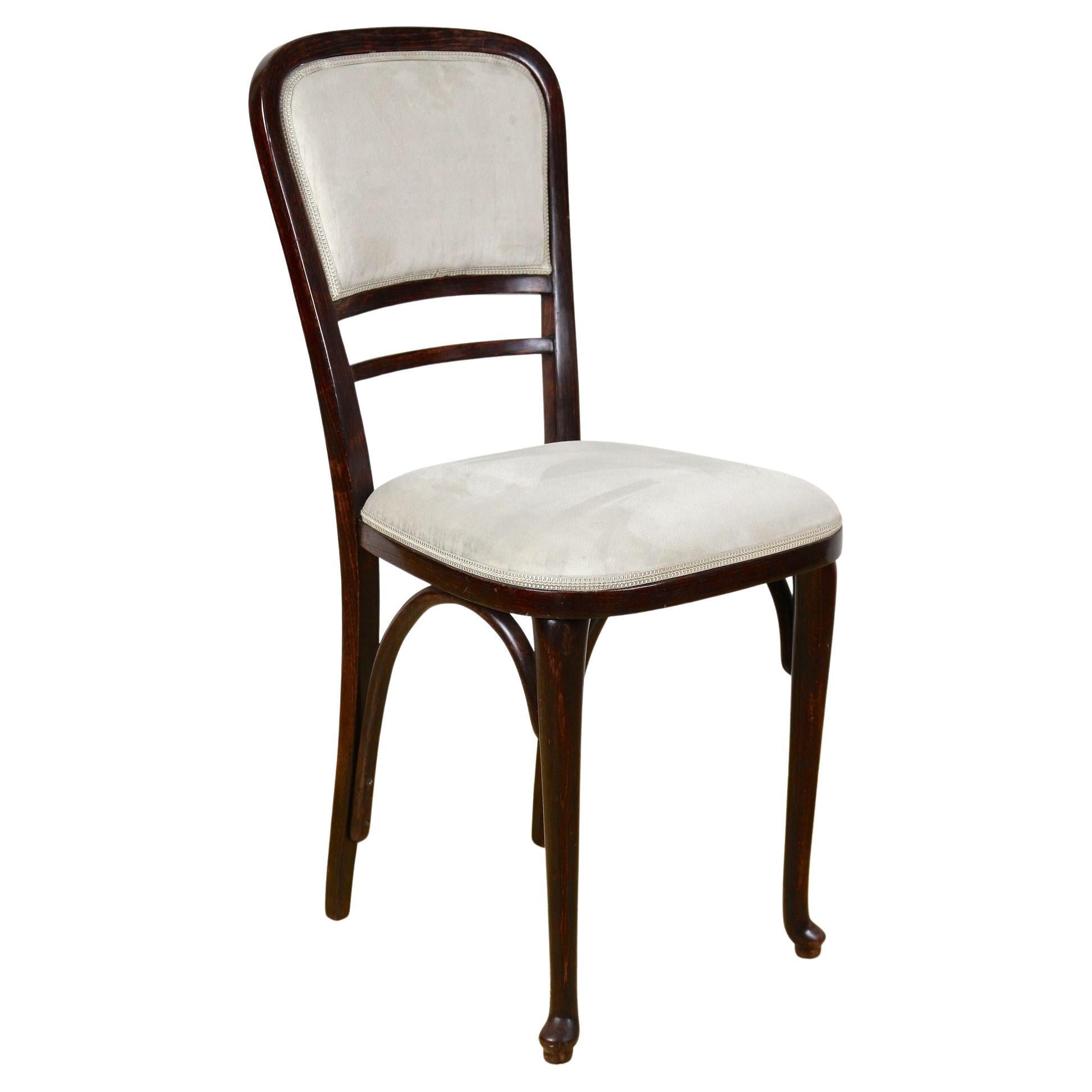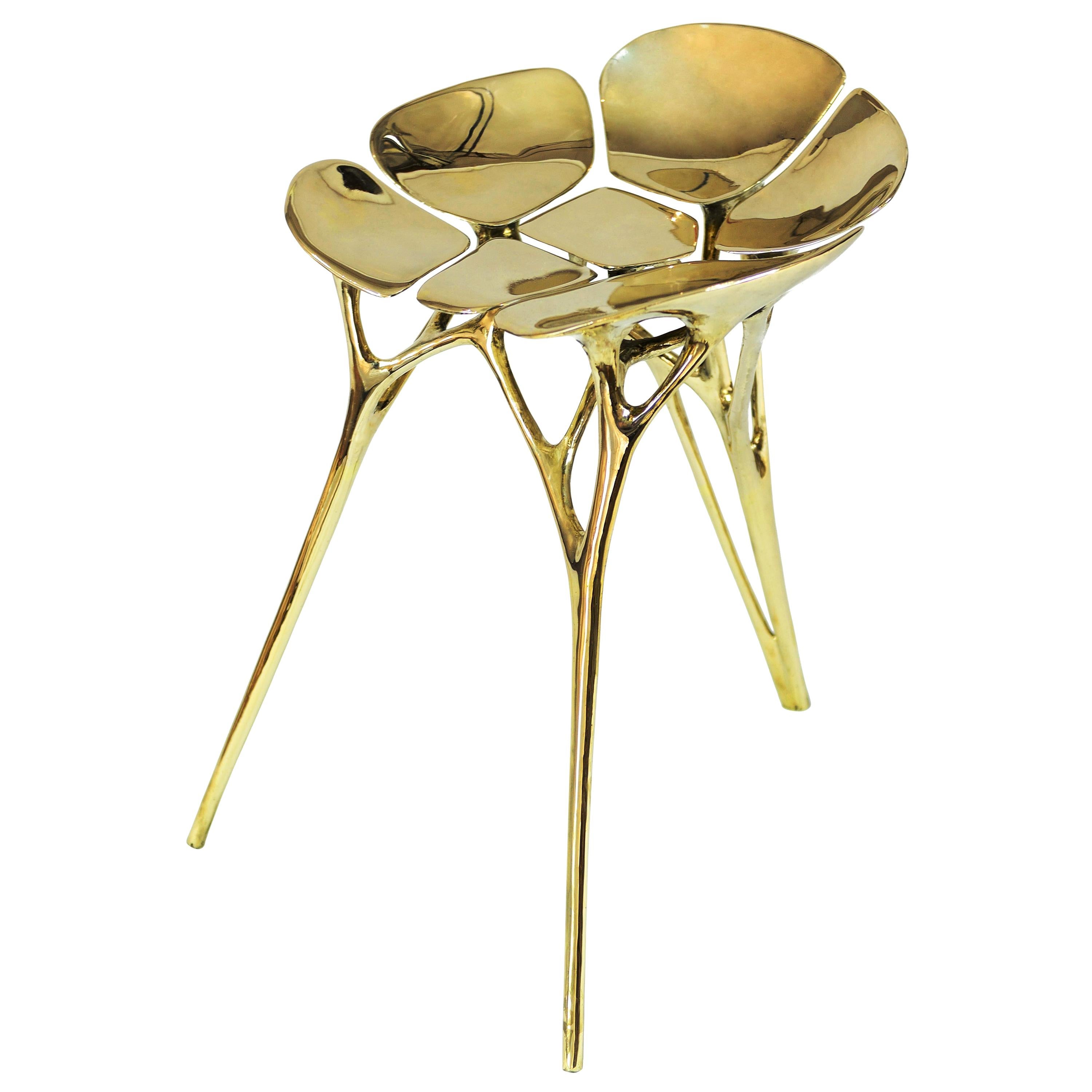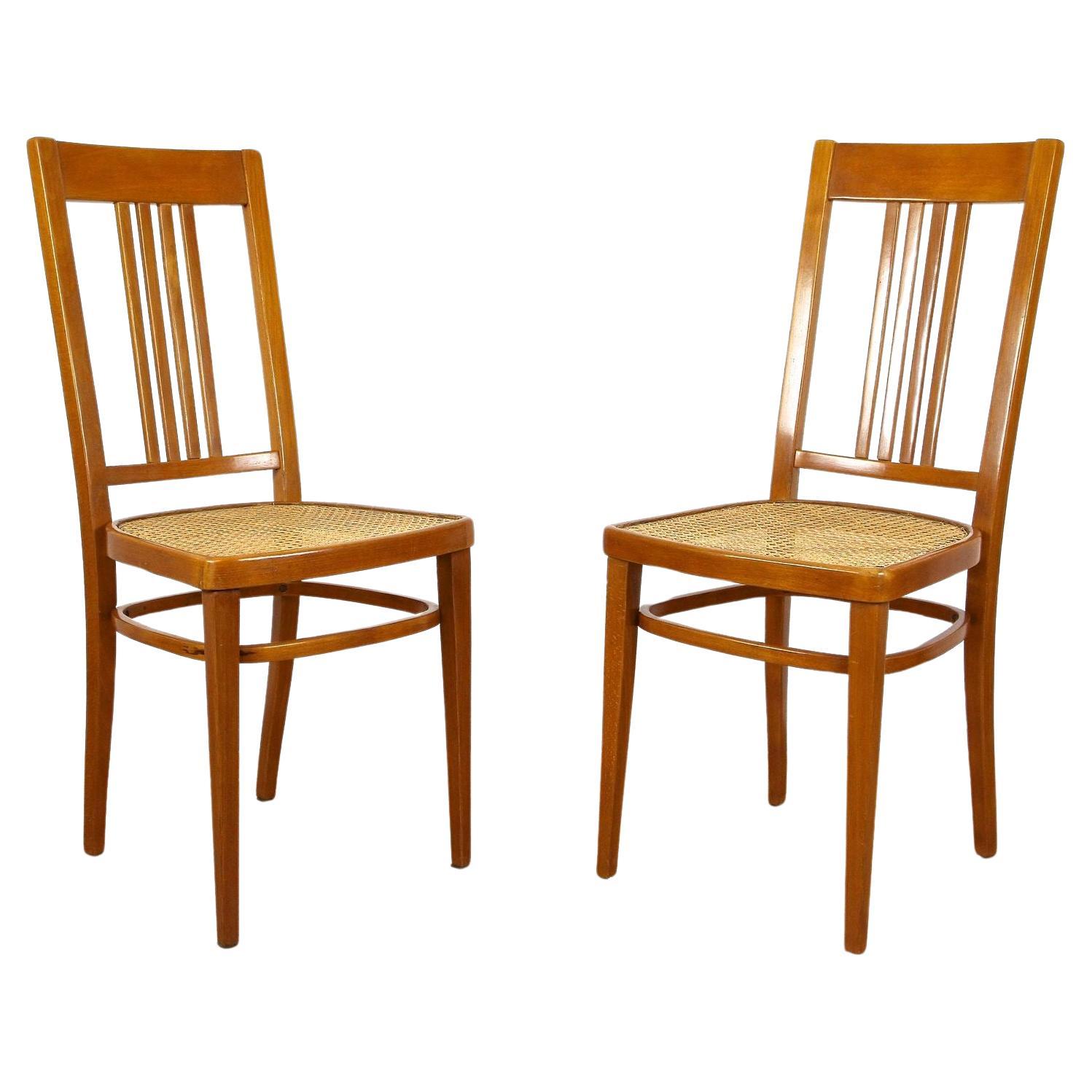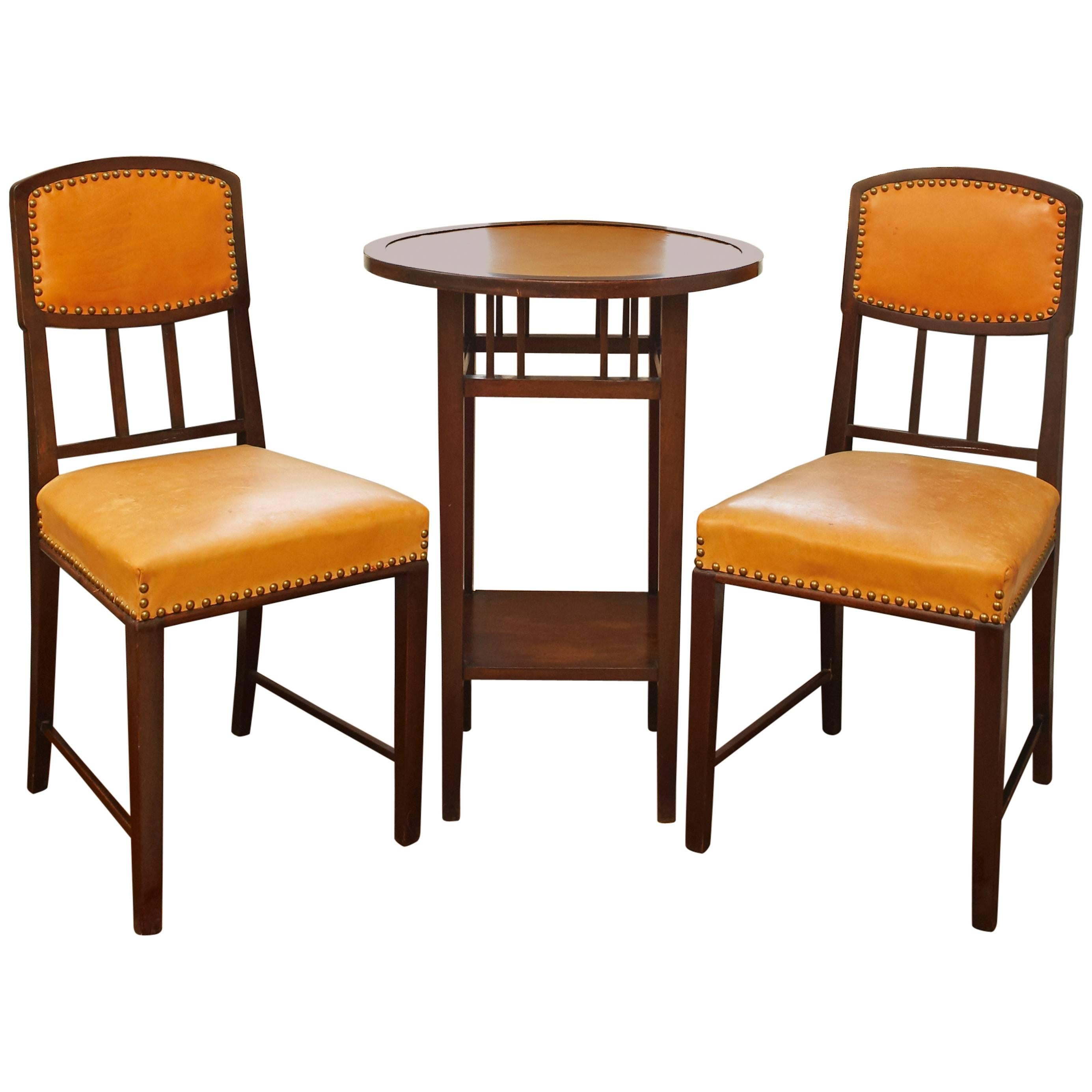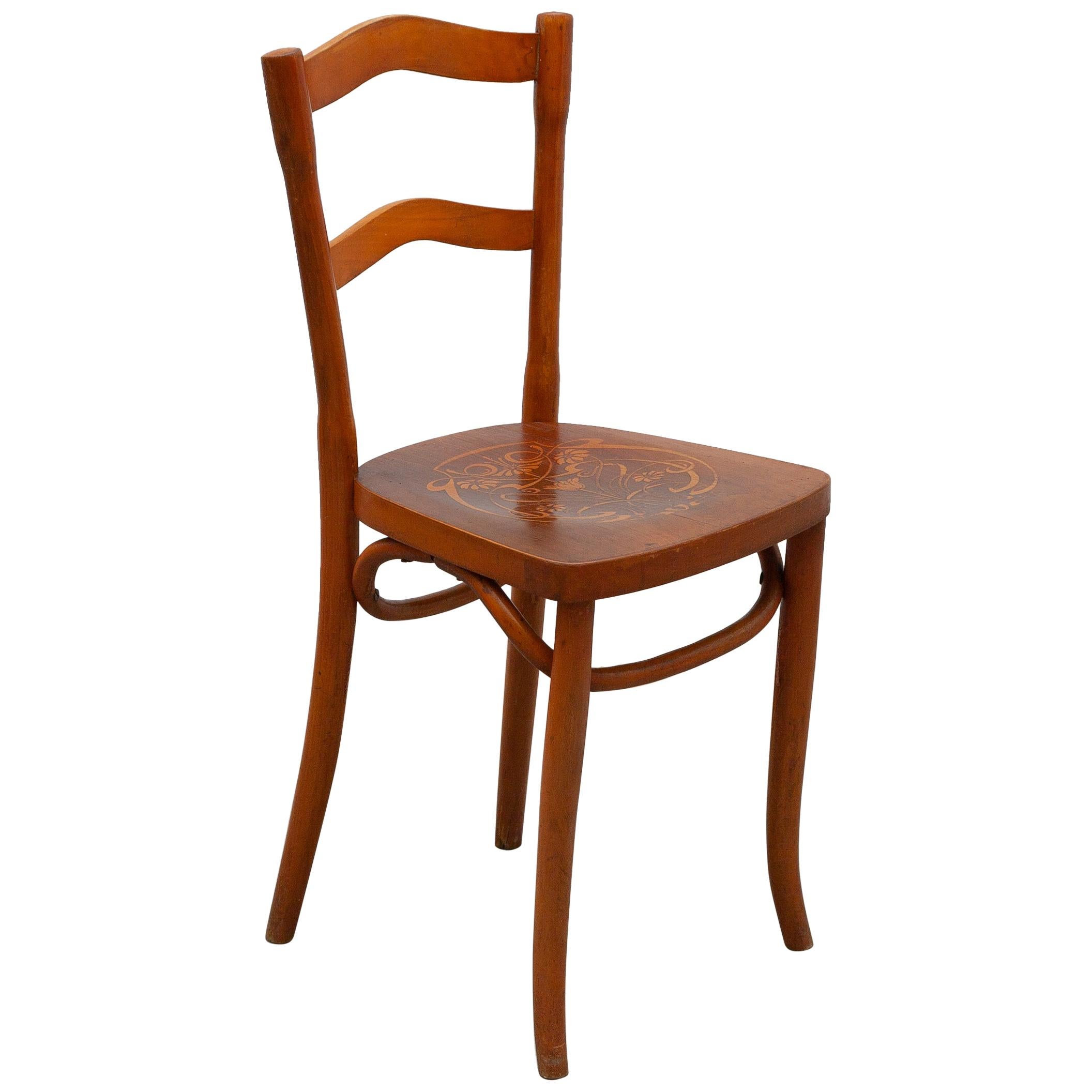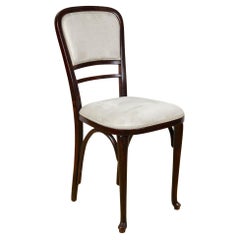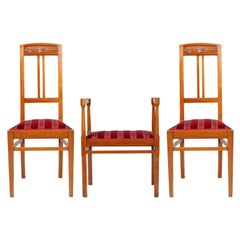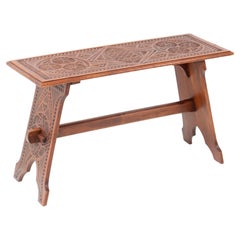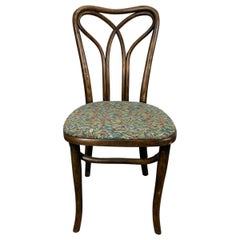
Art Nouveau Stool or X-Chair, Austria, circa 1900
View Similar Items
Want more images or videos?
Request additional images or videos from the seller
1 of 11
Art Nouveau Stool or X-Chair, Austria, circa 1900
About the Item
- Dimensions:Height: 27.5 in (69.85 cm)Width: 29 in (73.66 cm)Depth: 16.4 in (41.66 cm)Seat Height: 17.7 in (44.96 cm)
- Style:Art Nouveau (Of the Period)
- Materials and Techniques:
- Place of Origin:
- Period:
- Date of Manufacture:circa 1900
- Condition:Wear consistent with age and use. One side of the stool shows a very slight bend in the upper part - picture #7 - but it does not interfere with the design nor the perfect stand. You can find a old restoration mark underneath the seat - see picture#9 - but it´s not visible.
- Seller Location:Lichtenberg, AT
- Reference Number:Seller: AN-X11stDibs: LU155329086713
About the Seller
5.0
Platinum Seller
These expertly vetted sellers are 1stDibs' most experienced sellers and are rated highest by our customers.
Established in 2015
1stDibs seller since 2015
326 sales on 1stDibs
Typical response time: 3 hours
More From This SellerView All
- Art Nouveau Bentwood Chair by Thonet, Newly Upholstered, Austria, circa 1905By Marcel Kammerer, ThonetLocated in Lichtenberg, ATExceptional Thonet bentwood chair from the Art Nouveau period around 1905 in Vienna/ Austria. Designed by none other than the famous Austrian architect and painter Marcel Kammerer (1...Category
Early 20th Century Austrian Art Nouveau Chairs
MaterialsVelvet, Bentwood
- Pair Of Art Nouveau Bentwood Chairs by J&J Kohn, Austria circa 1910By Marcel Kammerer, Jacob & Josef KohnLocated in Lichtenberg, ATPair of rare early 20th century bentwood side chairs designed by famous Austrian architect and painter Marcel Kammerer (1878 -1959) for Jacob & Josef Kohn. The renowed company of J&J...Category
Early 20th Century Austrian Art Nouveau Side Chairs
MaterialsBentwood
- Art Nouveau Palisander Pedestal, Austria, circa 1900Located in Lichtenberg, ATGreat palisander pedestal from the early Art Nouveau period in Austria, circa 1900. Impressing with a timeless design, this beautiful pedestal convinces with its straight shaped form, veneered in fine palisander. The base shows lovely brass applications on each corner. The top plate floats on four slim rectangular columns, all covered by beautiful brass on both ends. Although this pedestal is nearly 120 years old, it would fit perfect to many kind of interior designs through its everlasting appearance. Useable as a classic flower pedestal but also perfect for displaying your ceramics, busts or other valuable...Category
Early 20th Century Austrian Art Nouveau Pedestals
MaterialsBrass
- Art Nouveau Cabinet or Buffet by August Ungethüm Mahogany, Austria, circa 1900By August Ungethüm, August Ungethüm Kunstmöbel-FabrikLocated in Lichtenberg, ATMesmerizing Art Nouveau cabinet or buffet by August Ungethüm from Austria, circa 1900. Designed and produced by the famous art furniture factory of A. ...Category
Early 20th Century Austrian Art Nouveau Sideboards
MaterialsCopper
- Pair of 20th Century Art Nouveau Bentwood Armchairs by Thonet, Austria, Ca. 1904By Gebrüder Thonet Vienna GmbHLocated in Lichtenberg, ATAbsolutely rare pair of Art Nouveau bentwood armchairs from the period around 1904. Impressing with its amazing shaped lines, these elaborately crafted early 20th century armchairs w...Category
Early 20th Century Austrian Art Nouveau Armchairs
MaterialsLeather, Bentwood
- Art Nouveau Bamboo Screen with Baumann Fabric Art Nouveau, Austria, circa 1900Located in Lichtenberg, ATFrom the very early 20th century, the rise of the Art Nouveau era in Austria comes this outstanding bamboo screen. The elaborately composed bamboo frame gives this unique screen a ki...Category
Early 20th Century Austrian Art Nouveau Screens and Room Dividers
MaterialsFabric, Bamboo
You May Also Like
- Italian Art Nouveau Side Chairs with Stool, Blond Walnut, Wax-PolishedLocated in Vigonza, PaduaElegant Italian Art Nouveau side chairs with stool, in blond walnut, hand carved, restored and polished with wax. Precious two-colored striped fabric in dark red velvet. Measures ...Category
Early 20th Century Italian Art Nouveau Side Chairs
MaterialsWalnut
- Fruitwood Art Nouveau Kerfschnitt Stool or Side Table, 1900sLocated in Amsterdam, NLStunning and rare Art Nouveau Kerfschnitt stool or side table. Striking Dutch design from the 1900s. Solid fruitwood base and top with original hand-carved Kerfschnitt decorative ele...Category
Antique Early 1900s Dutch Art Nouveau Stools
MaterialsFruitwood
- Austrian Art Nouveau Bentwood Side Chair Attributed to J & J Kohn, Early 1900'sBy J & J Kohn & Mundus, Josef HoffmannLocated in Buffalo, NYAustrian Art Nouveau bentwood side chair attributed to J & J Kohn, early 1900's. Amazing design. Wonderful patina, quality construction. Hand delivery avail to New York City or anywh...Category
Vintage 1910s Austrian Art Nouveau Side Chairs
MaterialsFabric, Bentwood
- Polished Aluminum Magna Chair or Stool with Sheepskin Upholstery, CustomizableBy Sight Unseen, BestcaseLocated in Brooklyn, NYMade from rolled aluminum — in a non-directional satin finish — and sheepskin, the Magna chair, designed by Charles Constantine, takes its inspiration from...Category
2010s American Modern Side Chairs
MaterialsAluminum
- Powder-Coated Steel Stool or Side Chair in Various ColorBy Matthew Ritchie, Aranda LaschLocated in Beverly Hills, CAThe FDA stool is made of stainless steel and comes with six colors: White, black, mirror, copper, grey and gold. The collection is designed by celebrated American designer-duo Ara...Category
21st Century and Contemporary American Stools
MaterialsStained Glass
- Sculptural Accent Chair, Side Table or Decorative Stool in Hand-Carved BeeswaxBy Rooms StudioLocated in New York, NYThis one-of-a-kind sculptural beeswax chair with sides is designed by Rooms Studio in collaboration with Shotiko Aptsiauri and was produced in Tbilisi, Georgia. The molded, beeswax sculpture, which can be interpreted as a stool, seat, side table or art object, is cylindrical in shape with two rectangular blocks at the top, representing a backrest or arms for the seat. About the Design Studio: Works of Rooms Studio refers to the sculptural forms and abundant materials in juxtaposition with the feminine instincts. Born and raised in Tbilisi, Georgia, the duo behind the Rooms, Nata Janberidze and Keti Toloraia, lean towards preserving the inherited craftsmanship techniques unique to the region. Massive wood and stone objects are hand-crafted using traditional techniques to create raw and symbolic forms often rooted in the designers' childhood memories. Growing up in a culturally diverse environment, where the two worlds - Western and Eastern collide, remarkably influenced their design language. Over the years, Rooms has created eight independent collections and collaborations equally memorable and representative of the duo's perpetual mission to bring life to omitted elements of a former life. Through their series of works, Janberidze and Toloraia try to examine the boundaries between the public and private. Experiencing adolescent years in the 90s - a significant decade of cultural and societal shifts - their work is a narrative of personal experiences of womanhood. By contrasting the new feminine monumental shapes with architectural brutality, Rooms challenges the status quo and also bridges the conventional and contemporary design with a confluence of female energy. The studio’s largest U.S. exhibition to date, Distant Symphony, expands upon this impulse to focus inward. The title is again a chief concern—some of the objects included here were designed during the global pandemic, under a regime of forced isolation that made the studio’s typically collective work process untenable. The pieces shown here are the results of Rooms’ search for a way forward. The first room, an antechamber of sorts, evokes the intimate quality of a private home. Shown here are trinkets and personal effects chosen by Janberidze and Toloraia for their emotive qualities; a low background noise emphasizes the climate of urban domesticity. The ensuing gallery space features highlights of Rooms’ recent design output. Here, the subtle scent of organic materials provides a sensory indication of the atelier’s interest in dichotomies: natural and man-made, personal and collective, local and cosmopolitan. In light of the global circumstances, Janberidze and Toloraia felt it was especially important to pursue collaborative work. Rooms invited three artists—Shotiko Aptsiauri, Salome Chigalashvili and Mariana Chkonia—to conduct a dialogue and shared design process. As such, this exhibition is a kind of polyphonic meditation on a need for solitude and desire for companionship. The practice of polyphonic singing, essential to Georgian folk culture, is reinterpreted here as a design endeavor. Chigilashvili, working with unprocessed yarn, interpreted folk motifs by adapting embroidery to the scale of furniture with expansive stitches applied to painted boards...Category
21st Century and Contemporary Georgian Stools
MaterialsComposition
